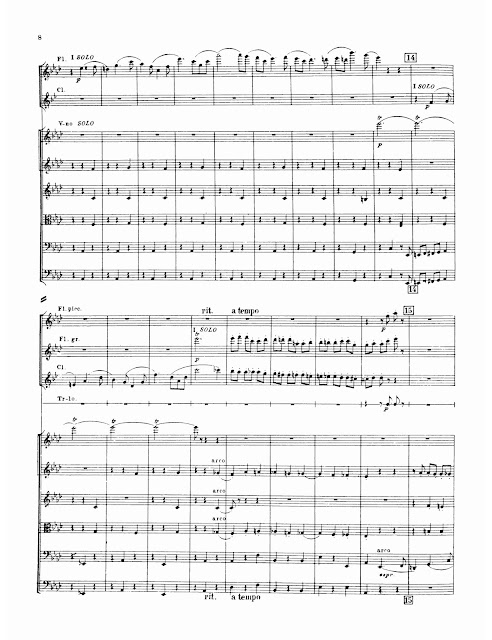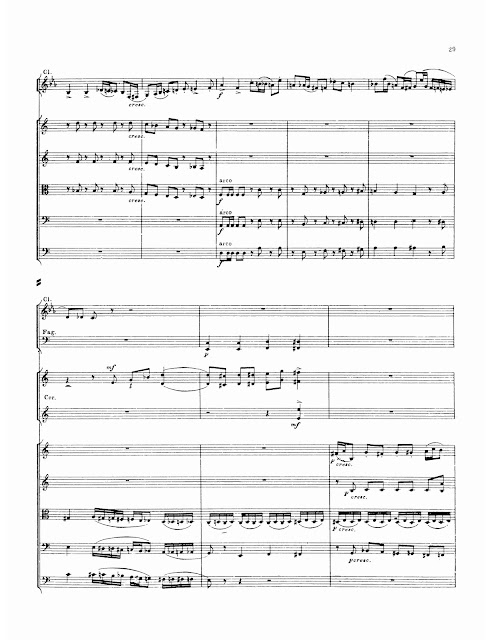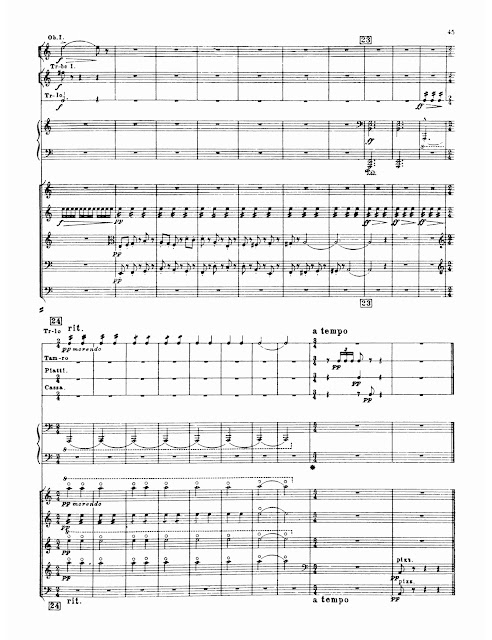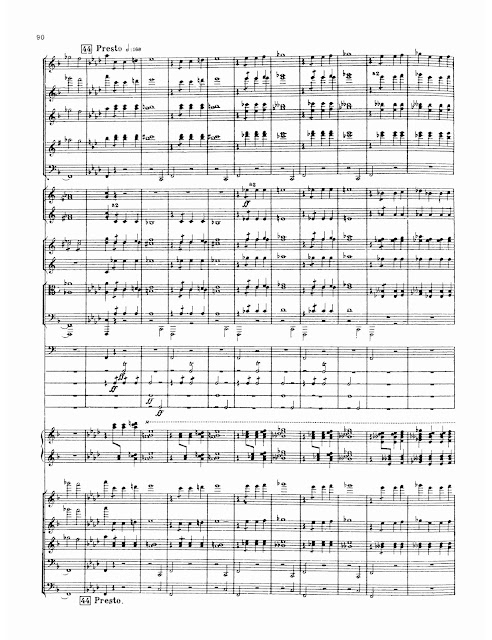DCXIV. SHOSTAKOVICH, Dmitri (1906-1975)
The young 19-year-old's graduation thesis. The charm and sophistication of this work in no small part contributed to Shostakovich's fame. Although the First has no program per se, his next two symphonies (not nearly as popular today) would include choral music which -- necessarily at that point -- glorified Lenin and the Soviet state.
But this is just pure music:
First movement
A jocular little duet between muted trumpet and bassoon seems to suggest the burlesque, which the young student had soaked up in his work as a silent cinema pianist ...
A memorable theme introduced by the clarinet. Shostakovich repeats the skipping feeling with the 1/8th-1/16th motif:
A second theme in a waltz-like tempo is introduced by the flute:
The theme returns as a march before repeating the waltz section.
The original thematic material returns -- darker -- but note the orchestration detail -- the triangle, which adds just the right amount of clarity, before Shostakovich ends with growling lower strings, pp.
Second movement
Switching the traditional second/third movement scheme of slow/fast to fast/slow, the whirling, skipping, joyful feeling of the first movement is transformed into a new theme, in the violins, preceding by a descending 16ths in the piano, a bold choice of orchestration.
Meno mosso. Melancholy clarinets:
Third movement
As if to say -- so here is my tragedy. I'll write a lot more of this stuff when I get older and things really do get tragic!
The entire movement is filled with pathos, seemingly way beyond this 19-year-old's youth:
He ends with divisi solo strings and a snarling snare drum:
attacca:
Fourth movement
But no traditional vivace or allegro is forthcoming. Instead, he opens with the mournful character of the previous movement:
Only to resolve to a forbidding timpani solo, followed by an exquisite muted cello solo:



























No comments:
Post a Comment